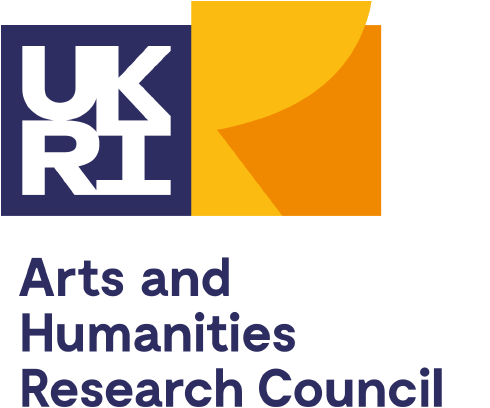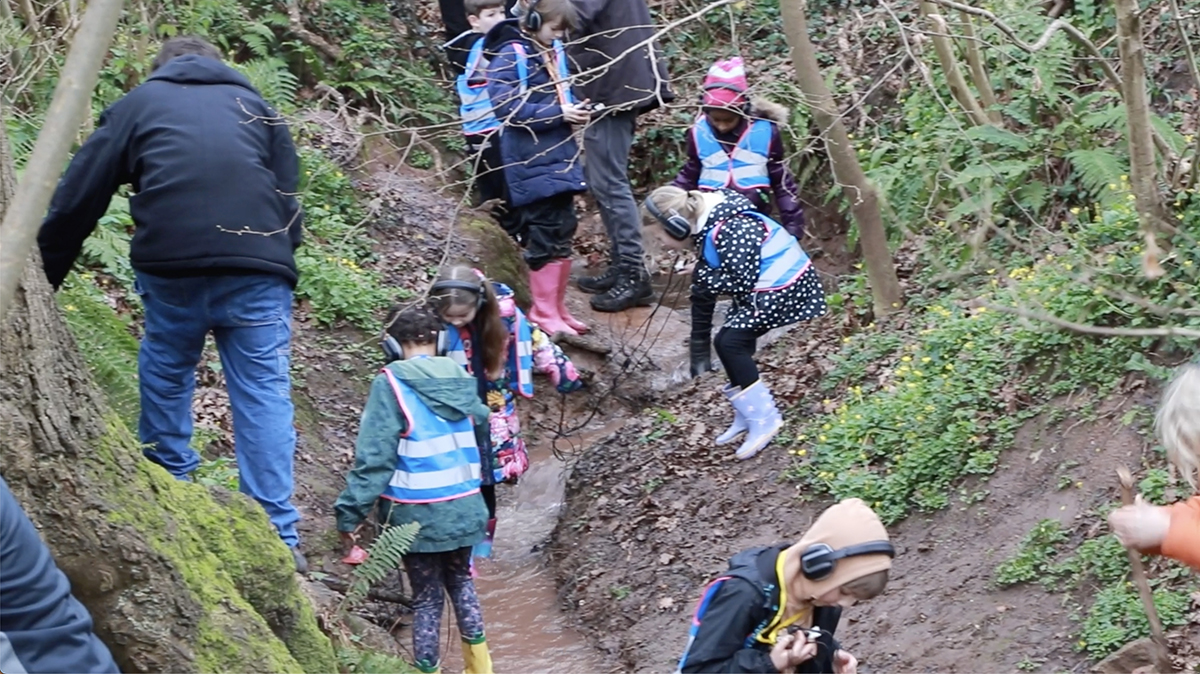
HEAR WATER is an interdisciplinary project focussed on listening, nature connectedness, sounds of nature, science, music technology, creativity and wellbeing centred on workshops delivered by Kathy Hinde, Jill Parsons and Matthew Olden as part of a research project led by Professor Amanda Bayley at Bath Spa University and Ian Thornhill at Manchester University in collaboration with IMAYLA and Avon Schools Eco Network.
Centred on LISTENING closely at WATERY locations, HEAR WATER provides resources and training for teachers to work with their classes to :
- Learn outdoors to listen and sense nature in new ways
- Explore Nature Connectedness through listening games and activities
- Build hydrophones (underwater microphones) to listen underwater
- Collect underwater sounds to generate artistic outputs with music technology
- Gather scientific water data on aquatic biodiversity
- Composing and improvising with sounds from nature
Hear Water is underpinned with processes aimed at strengthening connections to nature through outdoor learning, listening, curiosity, scientific enquiry, creativity and more. Workshops are aimed at Primary Keystage 2 and Secondary Keystage 3. Content can be combined in different ways with parts selected for younger and older year groups. Below is an overview of workshops held at Crockerne Primary School, Bristol in March 2024.
Below are details about the workshops listed in the order in which they were delivered at Crockerne C of E Primary School, Bristol. Activities can be repeated, combined and adapted to suit different group sizes and contexts. These activities will work well repeated throughout the year, to draw attention to how the soundscape changes throughout the seasons.
Activity ONE : LISTENING GAMES
Extensive guide to listening games and activities by Jill Parsons, download PDF HERE.
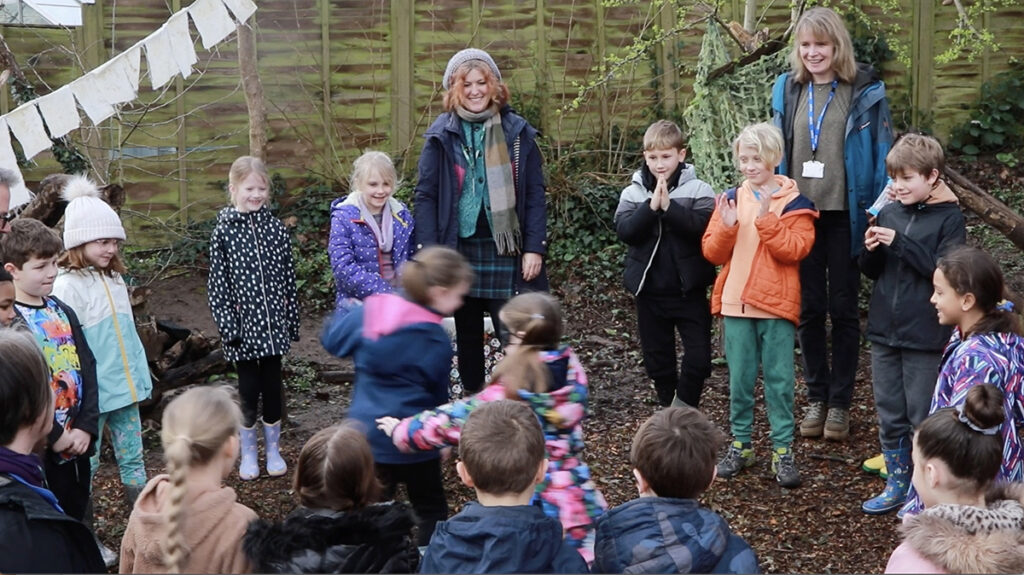
Activity TWO : ENHANCED AND AMPLIFIED LISTENING
A slight shift in perspective, or revealing hidden sounds, can inspire a child to listen out more actively for sounds they had not previously noticed. ENHANCED LISTENING involves giving the children a gramophone horn to listen through (or a similar horn or tube shaped object). Encourage the children to focus their attention on listening in particular directions by changing the position and direction of the horn. The horn slightly filters the sound, giving the children the chance to listen from a new perspective. The act of using a visually interesting device encourages the children to decide where to focus their listening making a step towards ‘active listening’.
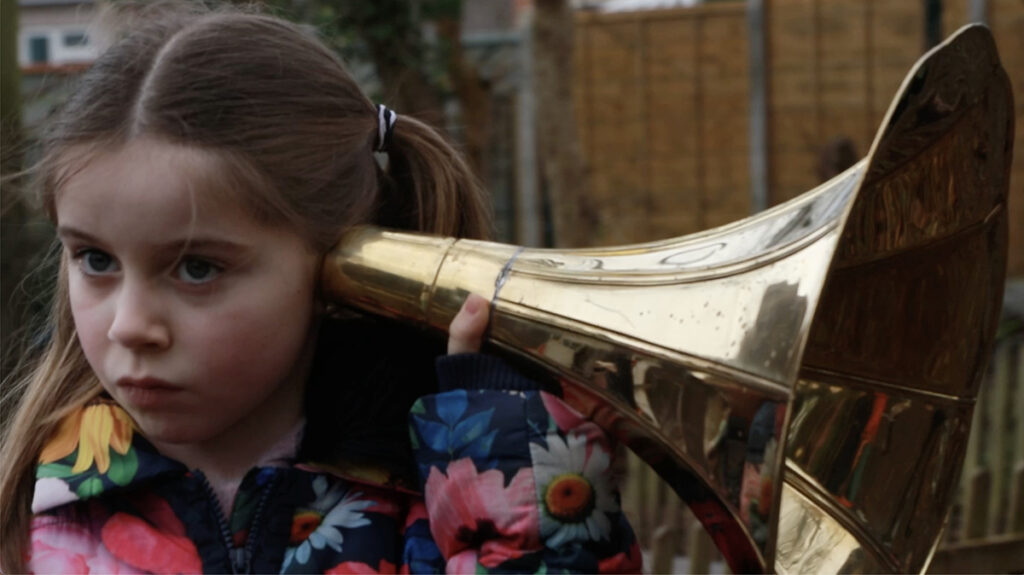
AMPLIFIED LISTENING involves giving each child a pair of wireless headphones, to collectively listen to amplified sounds. The use of specialist microphones such as underground microphones (geophones) and contact microphones can allow the children to listen to tiny sounds made by insects living in a wood stack. A directional microphone can emphasise the birdsong in the playground that children may not have noticed in as much detail before.
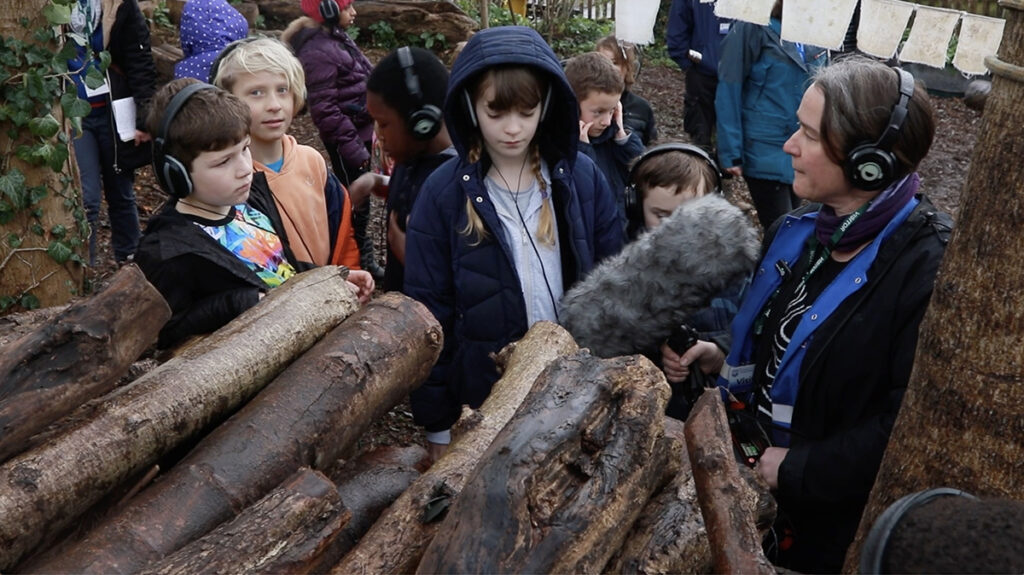
Activity THREE : BUILD A LISTENING DEVICE
Following on from the listening games and listening through horns and microphones, invite the children to take part in crafting their own listening enhancing device. This session can be introduced by discussing how various different animals hear, using pictures as guides. For example, deer ears are highly (and independently) mobile and can rotate almost 180 degrees. Their large size and cupped shape also enhances their hearing ability. An Owl’s face is like a parabolic dish that focuses sounds and enhances their hearing. Owls hunt at night and rely heavily on hearing to find prey. Their two ears are also positioned at different angles which helps them accurately locate the direction sounds are coming from. Gather recycled materials, including cardboard, tubes, paper tape and challenge the children to invent and make a listening enhancing device, working together in small groups. At the end of the session, ask each group to explain their design decisions and take them outside to test, and feed back about their experiences.
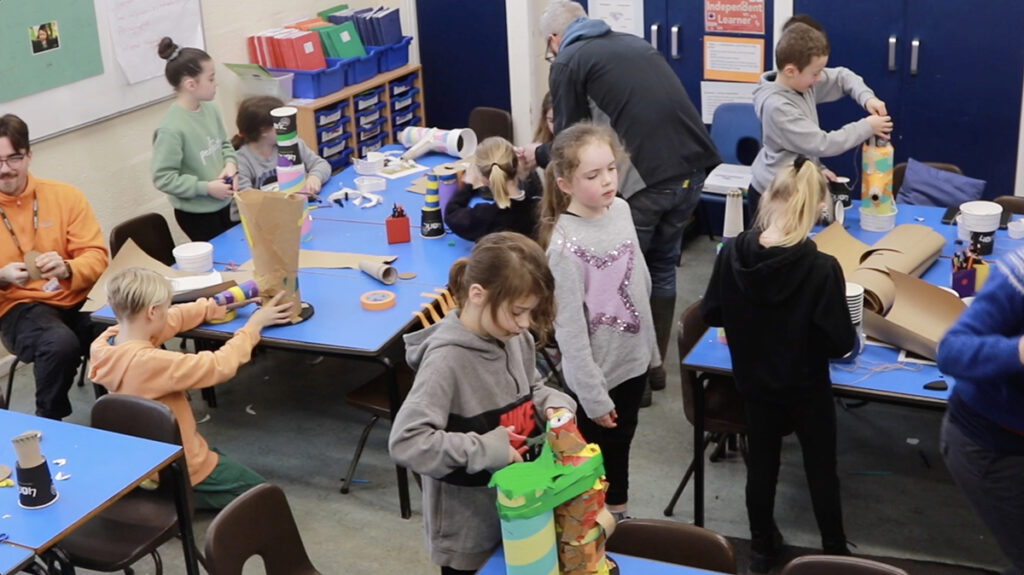
Activity FOUR : BUILD A HYDROPHONE
Outline by Kathy Hinde, download PDF HERE.
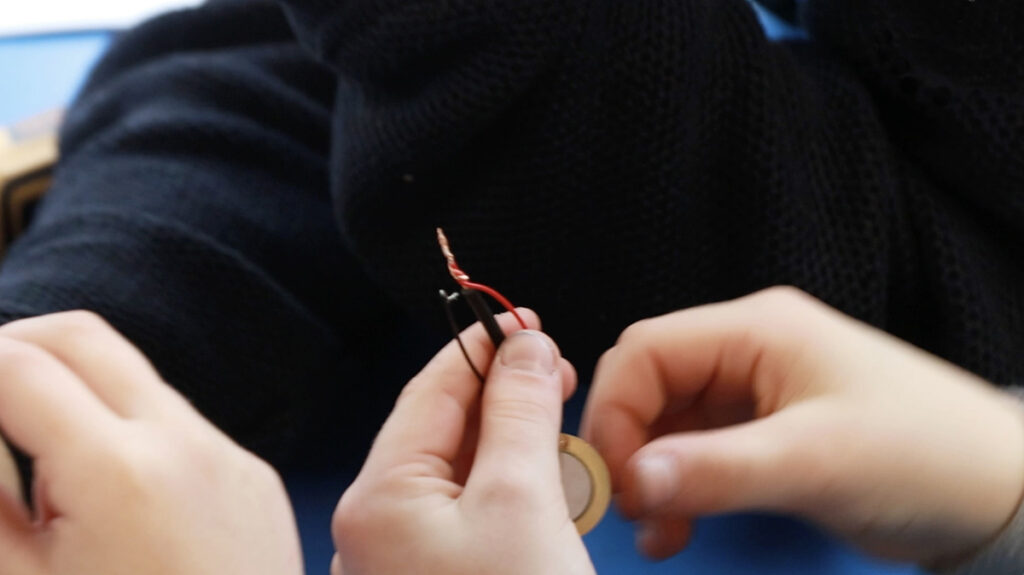
Activity FIVE : SIT SPOT – TUNE IN TO an outdoor soundscape.
See Listening Games guide by Jill Parsons from Activity one, page 5 – ‘A Moment Alone’ , download HERE if you don’t already have it from Activity one.
Activity SIX : LISTEN TO AND RECORD UNDERWATER SOUNDS
Outline by Kathy Hinde, download PDF HERE.
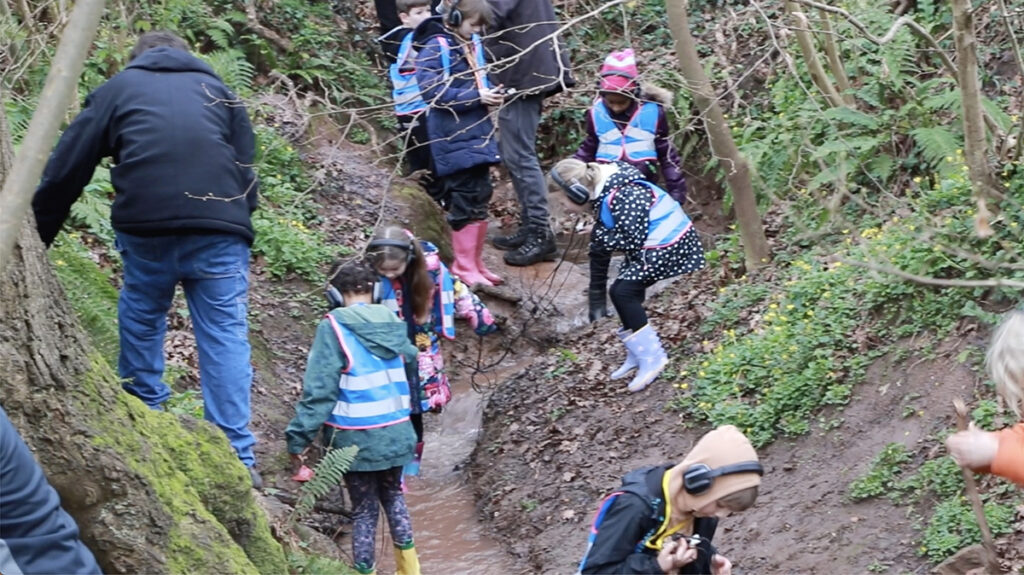
Activity SEVEN : POND DIPPING & WATER survey
Hear Water freshwater invertebrate sampling (a.k.a pond dipping!) by Ian Thornhill and Kathy Hinde. Download PDF guide HERE. It is a good idea laminate these sheets with matt laminate because pencil can be erased from matt laminate so the survey sheets can be used outdoors multiple times.
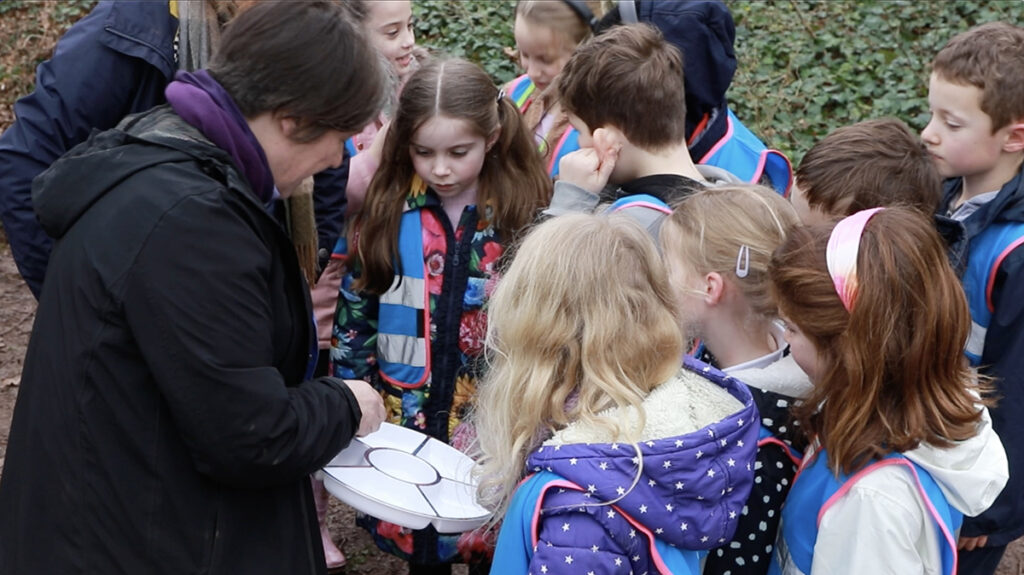
Activity EIGHT : COMPOSING AND IMPROVISING WITH SOUNDS from nature
Outline by Matthew Olden, download PDF HERE and watch video below for software demonstration. Bespoke software can be downloaded HERE. Read the guide and watch the video for instructions on how to install and use.
The software is designed to facilitate group improvisation and can be surrounded by exercises that do not rely on the software too. Here follow some suggestions :
1 – IMITATE THE SOUNDS – Ask the children to remember the underwater sounds they have been listening to with their hydrophones and find ways to imitate the sounds using theie voices and body. For example ‘shhhh’ ‘ssss’ vocalisations and tongue clicks, claps, finger clicks, hand rubbing.
2 – CONDUCT AN ENSEMBLE – After finding ways to make sounds, the next stage can. be to ‘conduct’ the whl group as an ensemble using hand signals. For example, loud and soft with hand signs raised up and lowered down or short sharp sounds suggested by pointing in jagged directions. Be inventive and invite the children to take turns to conduct the group.
3 – DRAW THE SOUNDS – Play some of the sounds to the whole class and ask them to make a drawing based on what they can hear. Children often respond well to this without further instruction, however, the idea is to encourage them to find ways to visualise the sounds in abstract ways (rather than draw a picture of what they imagine is making the sound, although no response is ‘wrong’). A way to encourage this can be to suggest they listen to different elements of the soundscape, is it spikey? is it smooth? what colour might it be? etc.
4 – FOLLOW A GRAPHIC SCORE – Following exercise 2, the abstract drawings can provide a starting point to use the ‘sample triggering’ software. Choose a drawing for the group to follow and use the sample triggers, volume and speed to create a soundscape. This can also work well with group conducting.
5 – IMAGES AND MAPS INTO MUSIC – use the Music Map software to use images and maps to transform some of the recorded sounds. These images can be maps of the stream that has been recorded, or graphs from environmental data about the location, either from pond dipping, or sourced online.
HEAR WATER started in 2022 as a partnership between Bath Spa University, Manchester University, Kathy Hinde, Matthew Olden and IMAYLA and was supported by funding from Natural Environment Research Council. This second iteration, focussed on schools training resources, is a partnership between Bath Spa University, Manchester University, Avon Eco Schools Network, Kathy Hinde, Matthew Olden and Jill Parsons funded by a Bath Spa University Impact Accelerator Award, from the Arts and Humanities Research Council, aimed at accelerating the impact of academic research.
Credits for Hear Water 2024 : Bath Spa University: Professor Amanda Bayley, Dr Matt Baker, Mel McCree; University of Manchester: Dr Ian Thornhill; Independent artists/educators: Kathy Hinde, Matthew Olden, Jill Parsons (IMAYLA); Education consultant: Tom Walmsley (Avon Eco Schools Network); Research assistants: Matteo Amadio, Louis Blatherwick, Alex Montgomery; Crockerne CofE Primary School and Northleaze CE Primary School, Bristol; Circuits design for pre-amps byTom Bugs at Bugbrand Bristol
